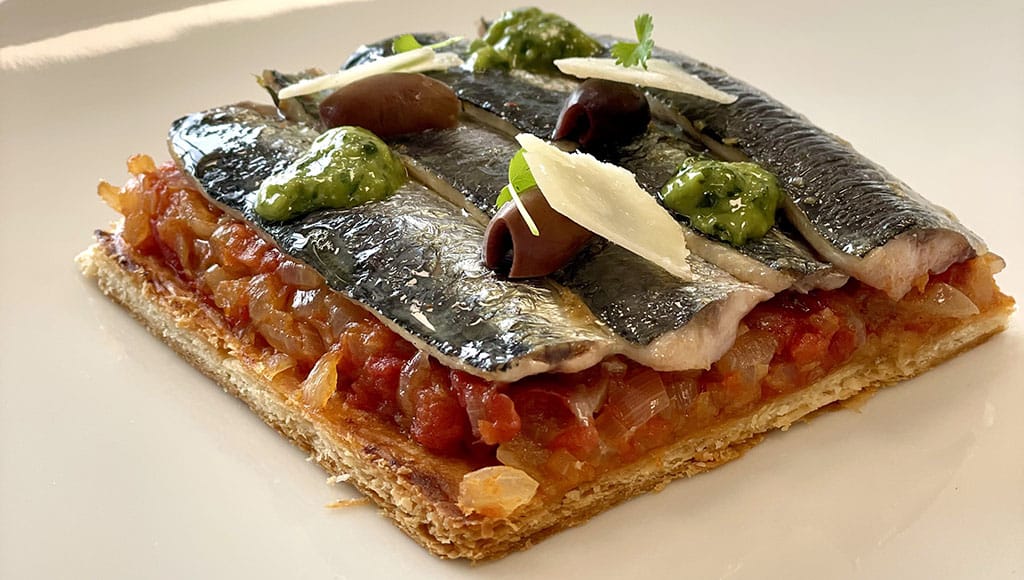In the culinary world, there are undoubtedly as many sauces as there are dishes. However, not all sauces are made equal. There is an esteemed quintet that is regarded above all. It is called The Mother Sauces.
First recorded by Marie-Antoine Carême and later modified by August Escoffier, the quintet now includes: Velouté, Béchamel, Espagnole, Tomato and Hollandaise. It performs not only on its own but also facilitates improvisations that make up the sauce repertoire of the French cuisine as well as other culinary traditions.
Before we dive into the intricacies of each mother sauce, let us first consider what sauce is. Broadly, sauce can be defined as a liquid preparation that accompanies the dish. Any great sauce carries a dual function. Firstly, it complements and enhances the flavour of the food that it is drizzled upon. Secondly, it gracefully clings and smothers that food for enhanced mouthfeel and gustatory satisfaction. Thus, any great sauce is a marriage of two parts: flavour and consistency.
Achieving a distinct flavour profile usually involves using herbs, spices, and condiments. They are layered on top of the sauce base, most commonly stock (the subject that we shall cover in the next conversation), and reduced to concentrate the flavour. With regards to consistency, it is accomplished with the help of thickening agents and emulsions using such ingredients as flour, cornstarch, eggs, or dairy. The most common of them all is roux.
Roux is made from equal parts of flour and fat, with the latter often coming in the form of butter or clarified butter. The mixture is cooked until the desired colour, depending on the sauce at hand. In this way, Velouté calls for a blond roux, Béchamel is made with the white kind, and some recipes of Espagnole deploy the brown one. Let’s now consider them more closely.
Béchamel
Named after Louis XIV’s steward, Marquis Louis de Béchamel (1603-1703), this sauce is a creamy liaison of the white roux and milk. The history is somewhat confusing as to whether Marquis de Béchamel actually came up with the sauce or the sauce was named after him, but Béchamel is now an essential part of many preparations, such as croque Madame, cod traybake, lasagne, cauliflower and cheese, or croquettes. When enriched with cheese and egg yolks, it results in Mornay sauce, or if combined with cooked onions, Béchamel becomes Soubise.
Velouté
Velouté means “velvet” in French, and it achieves its sophistication by combining roux and a light stock, like chicken, veal, or fish. It is often used as a starting point for gravies, mushroom sauces or bisques, which are perfect for complementing poultry or seafood. Some popular variations include sauce Allemande, which is a veal velouté with egg yolk and cream; sauce Supreme, which is a chicken velouté with the heavy cream, or Vin Blanc Sauce, which is a fish velouté with shallots, white wine, and fine herbs.
Espagnole
Based on the flavourful reduction of the brown stock, there appears to be two ways of achieving a velvety consistency in the Espagnole sauce. The first one resorts to the dark roux as a thickening agent. The second adds butter (a lot of butter) to the final stock reduction, aka monter au beurre. The roux-based Espagnole serves as a robust base for stews and hearty meat dishes, whilst the latter often performs on its own and accompanies meat or game, for instance, Madeira sauce (with addition of Madeira wine) or Bordelaise (with the addition of red wine and bone marrow).
Tomato sauce
Being quite possibly the first mother sauce we ever tasted, tomato sauce is a mixture of onions, garlic, thyme and tomatoes. Some traditionalists may also start with a roux, but most preparations rely on tomato reduction to build flavour and create thickness. Without this sauce, we cannot imagine our favourites such as pizza, pasta or shakshuka.
Hollandaise
The most recent addition to the quintet, Hollandaise is a fancy, warm mayonnaise that is prepared with clarified butter instead of oil. To achieve the thickness, it deploys emulsification. During this process, a binding agent acts as a force to hold together two substances that would usually not mix. In the context of Hollandaise, egg yolks help hold butter and lemon juice together. This sauce is an intricate balance that calls for care and attention, but it is definitely worth mastering as it is a perfect partner for many fish, egg, or vegetable preparations. With an extra twist of tarragon and shallots, it transforms into a glorious Béarnaise that is so delicious with a steak.
By Dr. Irina Mikhailava
|| features@algarveresident.com
Dr. Irina Mikhailava, a chef and a good food champion, happily residing in the Algarve and eating all over the world with an appetite for learning, sharing and writing. Instagram: incompanyoffood




















